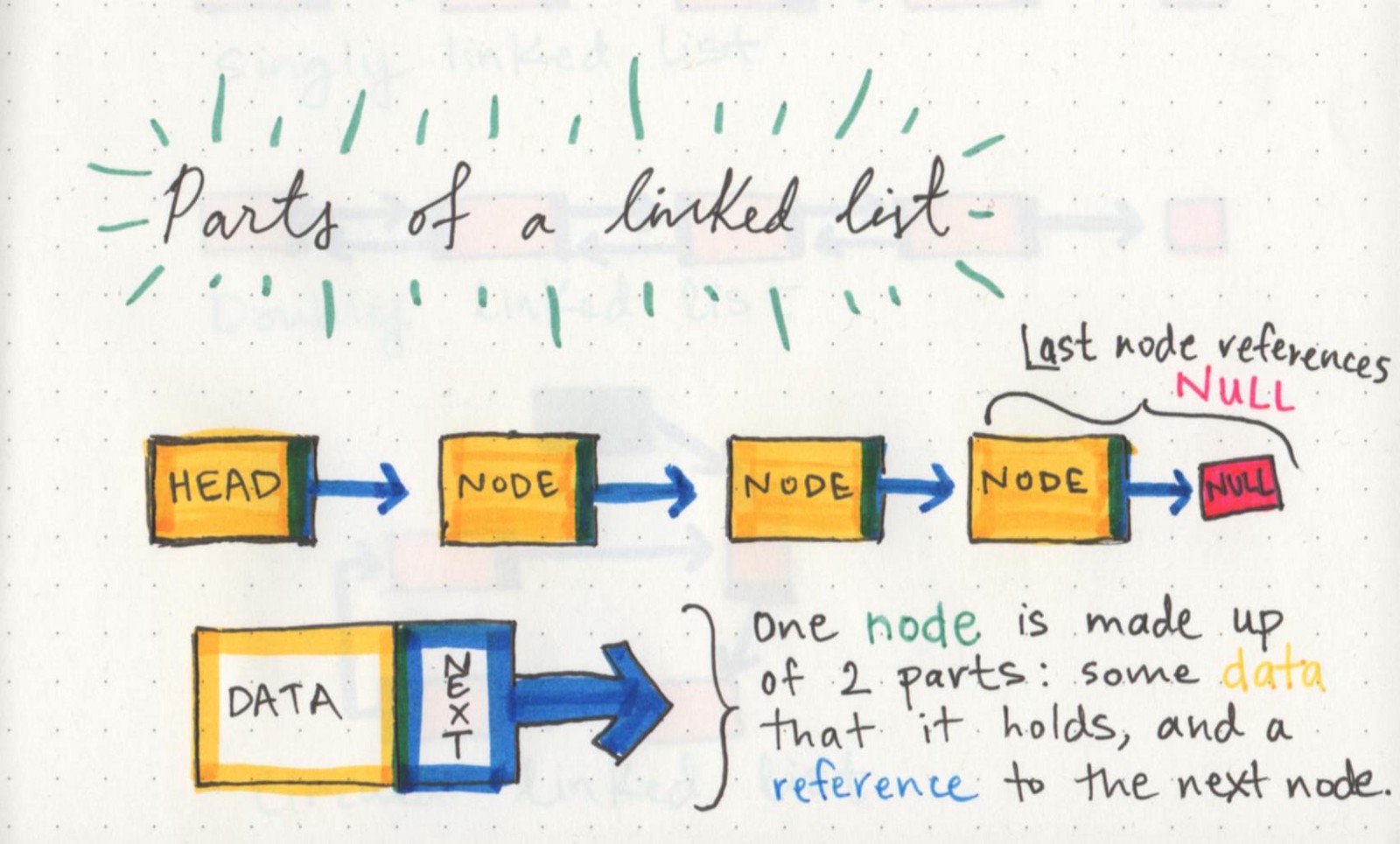Data Structures: Linked-Lists

Type of Data Manipulation
Linked-Listsは、Data Structureのうち反復的(Iterative)構造をもつ.
- Iterative 反復的
- Recursive 再帰的
Data Manipulation Speed Comparison
| Query | Linked list | Array normal | Array sorted | BST |
|---|---|---|---|---|
| SEARCH | O(n) | O(n) | O(logn) | O(logn) |
| INSERT | O(1) | O(1) | O(n) | O(logn) |
| REMOVE | O(n) | O(n) | O(n) | O(logn) |
Queries of Linked-Lists
- Queries
- 追加 insert()
- 削除 remove()
- 検索 search()
- 更新 update()
Pros/Cons of Linked-Lists
- When to use:
- Frequent insert / delete operations on elements in the array without requiring random access to the elements in the array
- Pros
- Insertions and deletions are easier than for contiguous (array) lists
- Scalability: Overflow can never occur unless the memory is actually full
- With large records, moving pointers is easier and faster than moving the items themselves
- Cons
- Linked lists do not allow random access
- Time must be spent traversing and changing the pointers
- The pointers require extra space
Components of Linked-Lists
- Each Node has:
- Data
- Pointer
- Each List has:
- Head
- Tail
Types of Linked-Lists

- Singly-linked list
- Circularly-linked list
- Doubly-linked list
Code for Linked-Lists
以下二つのクラスを用意する.
- 連結リストにおけるノードの構造を表現するクラス
-
連結リストの構造や処理を表現するクラス
- 実際にクエリを投げる
1. Node: 連結リストにおけるノードの構造を表現するクラス
class linkedListNode(object):
def __init__(self, d, n = None):
self.data = d
self.next_node = n
def get_next(self):
return self.next_node
def set_next(self, n):
self.next_node = n
def get_data(self):
return self.data
def set_data(self, d):
self.data = d
2. 連結リストの構造や処理を表現するクラス
class SinglyLinkedList(object):
# Two instance variable: root&size
def __init__(self, r = None):
self.root = r
self.size = 0
def get_size(self):
return self.size
def add(self, d):
new_node = Node (d, self.root)
self.root = new_node
self.size += 1
def remove(self, d):
this_node = self.root
prev_node = None
while this_node:
if this_node.get_data() == d:
if prev_node:
prev_node.set_next(this_node.get_next())
else:
self.root = this_node.get_next()
self.size -= 1
return True # data removed
else:
prev_node = this_node
this_node = this_node.get_next()
return False # data not found
def find(self, d):
this_node = self.root
while this_node:
if this_node.get_data() == d:
return d
else:
this_node = this_node.get_next()
return None
3. 実際にクエリを投げる
- get_size()
- find(data)
- add(data)
- remove(data)
# ノードの作成
node1 = linkedListNode("10")
node2 = linkedListNode("6")
node3 = linkedListNode("3")
# 連結
node1.set_next(node2)
node2.set_next(node3)

Leave a Comment